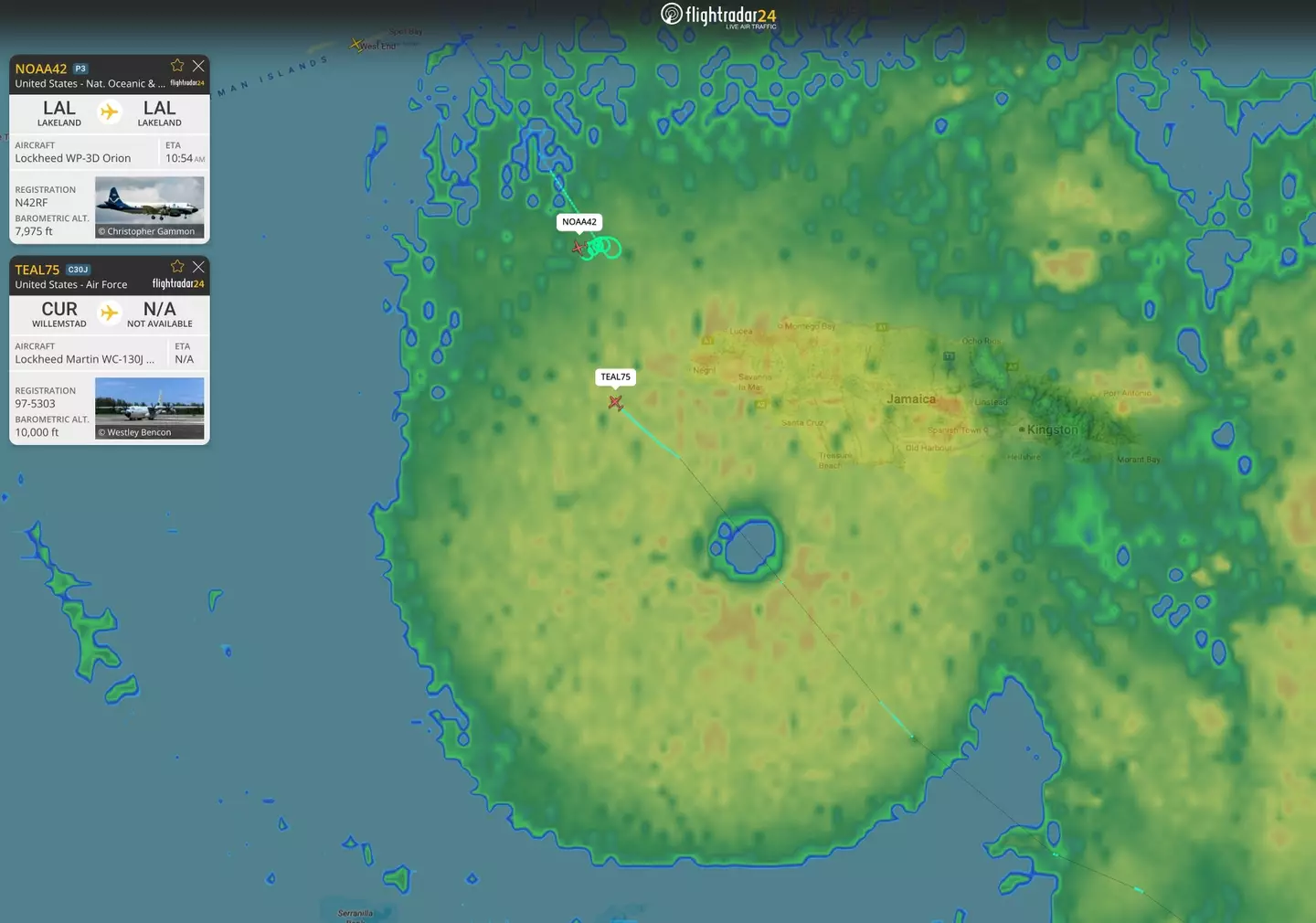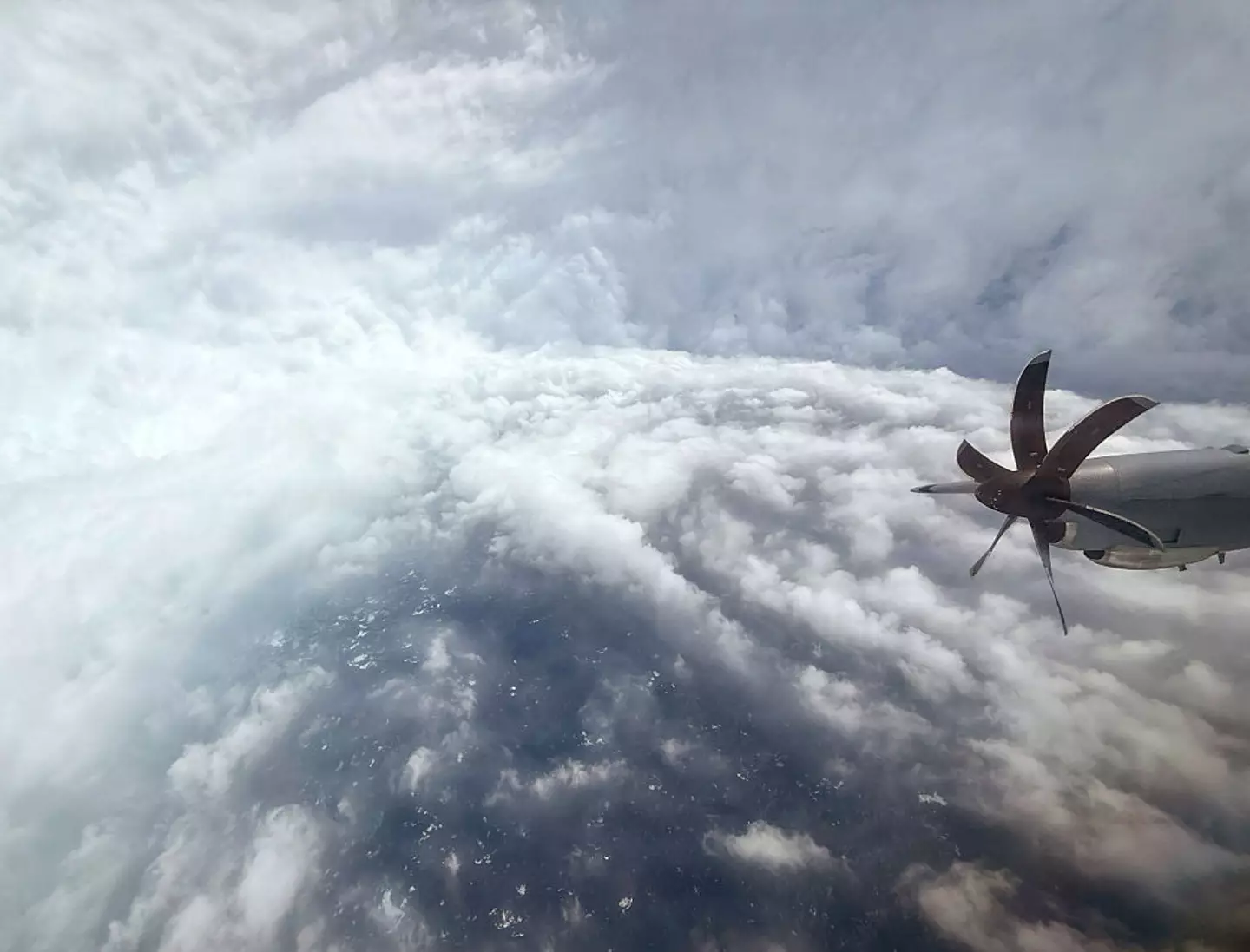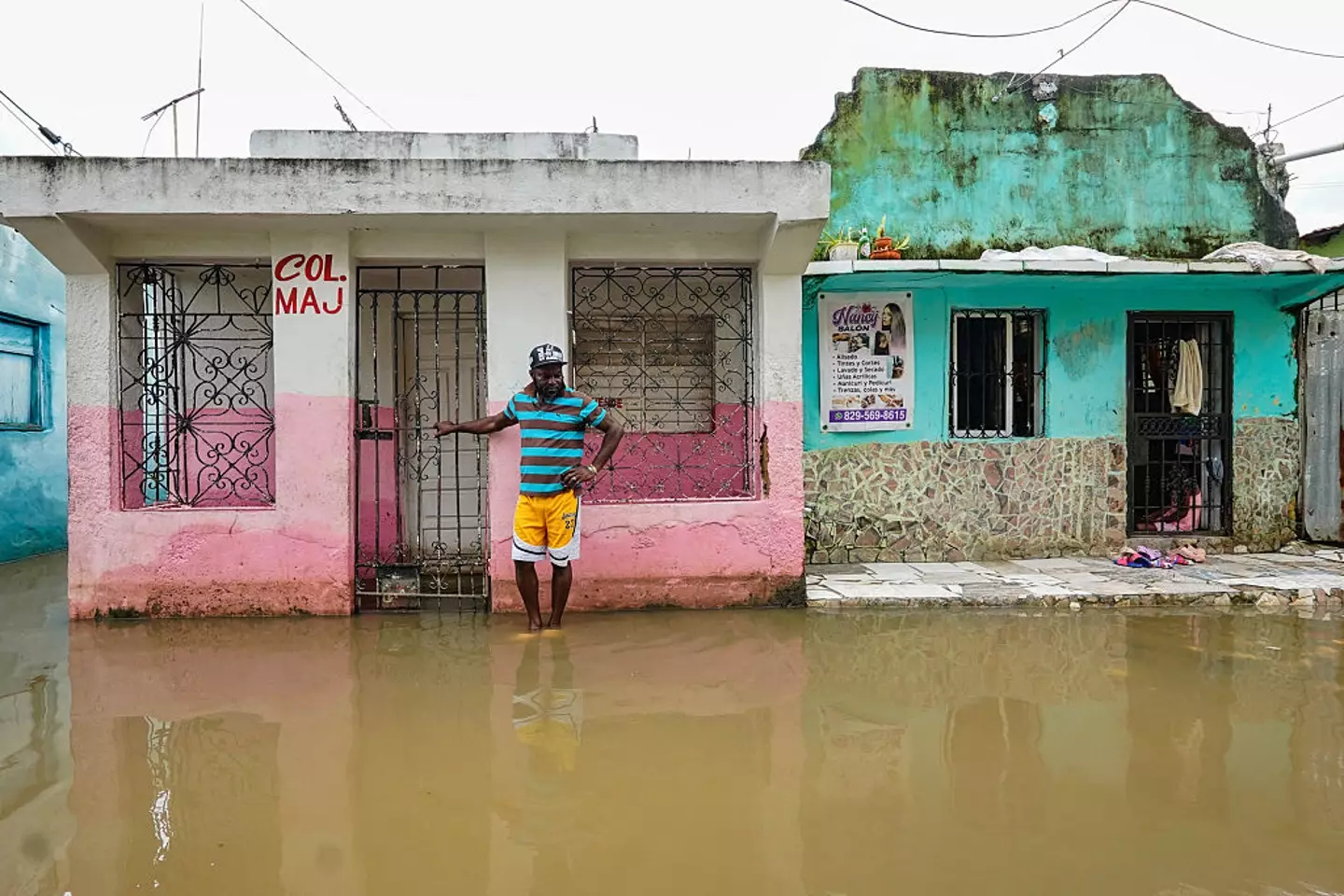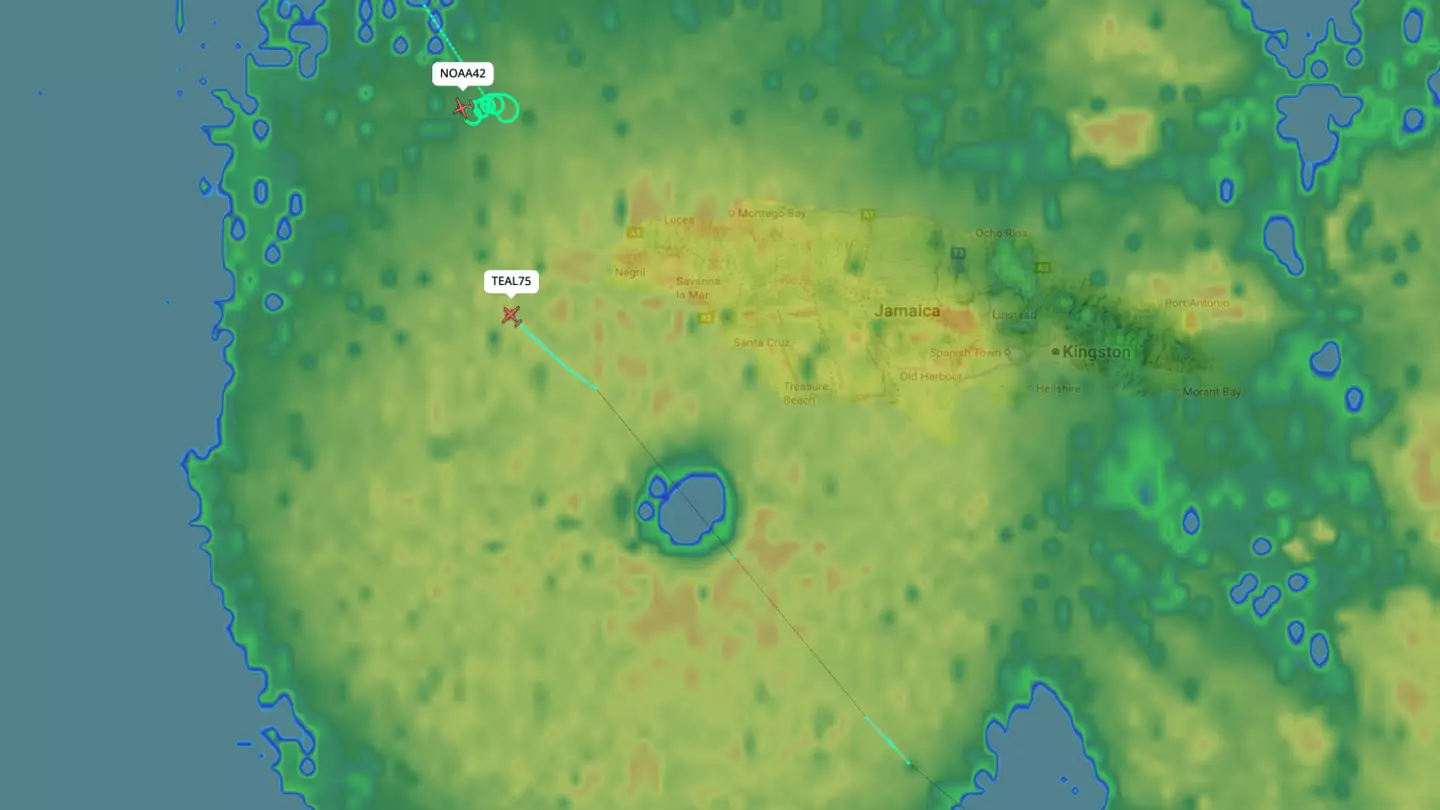A number of individuals were left stunned after noticing a particular feature on a live map as Hurricane Melissa made its approach towards Jamaica.
If you’ve yet to experience the excitement of using FlightRadar, a live flight tracking app that covers the entire globe, you’re certainly missing out.
This app not only provides real-time tracking of commercial aircraft, detailing their type and intended destination, but it also occasionally reveals unique planes, including military and even fighter jets.
However, for security and privacy reasons, the US military, government, and other high-profile flights are typically not visible to the public.
Nevertheless, pilots sometimes emit their ADS-B signal when the risk of exposure is minimal, adding a thrill for those watching from the ground.
Recently, the US Air Force Hurricane Hunters captivated audiences when their tracking showed them flying through the eye of Category 5 Hurricane Melissa just before it hit the western coast of Jamaica at approximately 1pm ET on Tuesday, October 28.

Once it made landfall, Melissa was labeled the ‘storm of the century,’ with 185mph winds, severe flooding, and a force greater than Hurricane Katrina, which took the lives of nearly 1,400 people and caused over $125 billion in damage to New Orleans in 2005.
Melissa reduced in strength to a Category 3 storm before hitting Cuba, but not without leaving significant destruction throughout the Caribbean.
Before the storm made landfall, Hurricane Hunters flew directly into it, navigating a Super Hercules from the 53rd Weather Reconnaissance Squadron through the storm at an altitude of 10,000 feet.
Meanwhile, a second aircraft, a WP-3D Orion operated by the National Oceanic and Atmospheric Administration (NOAA), maintained a position at around 8,000 feet, skirting the storm’s edge.

The daring mission left many astonished and questioning how the aircraft and pilots could endure such a storm. Known as Hurricane Hunters, Typhoon Hunters, or Cyclone Hunters, these teams are responsible for flying into severe weather to gather crucial data.
They collect information such as wind speeds, temperature, pressure, and humidity, providing vital data for forecasters and the National Hurricane Center (NHC) to make informed decisions regarding evacuations and warnings to protect lives.
“Those pilots have some serious guts,” one Twitter user commented in admiration of the tracking.

“And I don’t like turbulent landings…” remarked another, to which FlightRadar humorously replied: “Turbulence on landing isn’t really a problem with these flights.”
The Air Force later confirmed that the Super Hercules, identified as TEAL 75 on FlightRadar, made a safe return, despite encountering severe turbulence during the mission.
“During the event, the aircraft briefly experienced forces stronger than normal due to turbulence,” it stated.
“While this does not automatically indicate damage, standard safety procedures require an inspection before returning to operations.”

